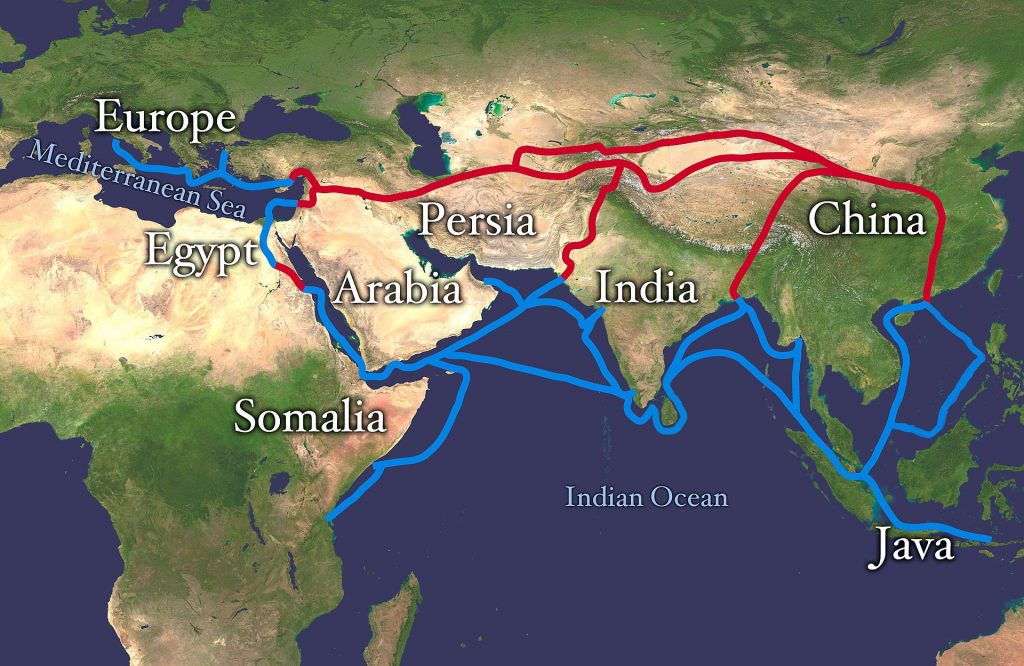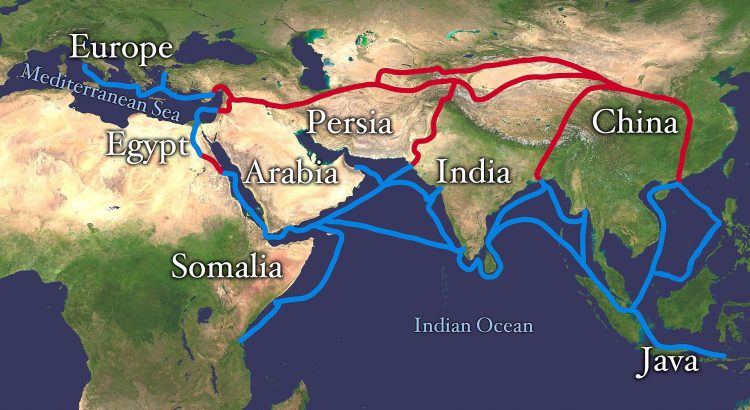

Ancient trading caravans took spices and silk from Asia to Europe. They loaded their pack animals and ships with goods and traversed space with their wares. By taking commodities from one region where it was abundant to another where it was scarce, they made profits.
As a stock trader, I cannot take a stock through space to arbitrage for profits as ancient traders once did. But there is another dimension I can arbitrage: time. The same way goods can increase in value through space like the Asia-to-Europe spice trade, stocks can increase in value through time.
When trading, I like to view time as if it were a physical plane. This helps me put the passivity of investing in perspective. I’m not holding a stock and sitting on my hands; I’m carrying the stock through time with the intention of selling it to the people of the future. Like the captain of an ancient merchant ship, I’ve charted the “expected course to the destination” on my map, and I have my eyes on the horizon for storms, pirates, competing merchant ships, and milestone ports. While I may not be swimming with the goods strapped to my back, I’m still doing something more active than is typically appreciated: I’m navigating time.
When space and time is traversed, profits can be made. The same way the average ancient European probably wished they could travel to the Far East to buy spices at a much cheaper price but couldn’t be bothered to, future buyers of my stock will wish they could go back in time to buy my stock at a cheaper price, even though they can’t expect a matured stock to drop back to the prices it traded for when it was still in its development stage.
So while I can’t arbitrage geographically as a stock trader, I can arbitrage time.
Price Volatility Through Time and Space
Prices varied from city to city and port to port for ancient traders. Similarly, stock prices fluctuate through time. My job as a trader is to figure out when a stock might become valuable enough to make my expedition through time worthwhile, similar to how an ancient trader would figure out where their spices might be valuable enough to make their expedition through space worthwhile.
Still, volatility and uncertainty is a challenging variable to cope with. Similar to how a trading caravan could never be quite sure what the market in Europe would pay for their goods as they loaded their pack animals in Asia, I can never be quite sure what the market five years from now will be willing to pay for my stocks (although I typically have an idea of what a fair range might be if things go right.)
To combat this uncertainty, shrewd traders build a margin of safety in their bids. They try to buy high quality stuff at prices low enough so that they can have a good chance of finding a market that is willing to pay much higher prices than their acquisition costs and troubles (the discount rate). While a trader might not know exactly how high they can sell their stock for, they must somehow determine that it’s high enough to embark on the journey through time.
Once you have charted your map, do not be deterred by fluctuating prices through different points in space and time. If you have determined that you can get the best return on your spices by journeying to Italy, do not be demoralized by what a merchant in Turkey is bidding. Likewise, you should never be demoralized by what the market’s pricing your stock for on the second year of what you intended to be a five-year investment.
Only the traders who can successfully reach the end of their journey through space or time will have the opportunity to make life-changing profits from their goods or stocks.
Both time and space can be risky dimensions to traverse if you’re a trader.
A trading caravan from Asia could arrive in Europe only to find a war-torn land, or that another trader had already delivered the same goods and drove prices down. On the way to Europe, the caravan was also a target for thieves and highwaymen as its traders traversed the physical plane with valuable goods.
A stock trader traveling through the dimension of time with a stock is exposed to many risks, too. Industry disruption could completely tarnish the value and demand for your stock. There could be tariffs that change the dynamic of your company’s profitability profile. A foolishly placed stop loss could rob you of a great opportunity because you didn’t have enough conviction to weather the entire journey – the equivalent of a traveler turning home and canceling a trip because of a few potholes.
Temptations along the road of time might cause you to abandon your stock before you reach your most profitable point in time, the same way a spice trader from Asia could be duped by a mid-way merchant that traveling further won’t lead to a better profit.
Traversing time and space with an asset is superior to trading its volatility
Consistency in trading results can be found when your asset or commodity traverses space or time.
Gambling on price volatility however is an unreliable and dangerous way to try and make a profit. It’s like betting that a merchant ship will get robbed by pirates. Unless you plan to rob the merchant ship yourself, it’s gambling at its worst and unnecessary speculation at best. Stock manipulators and stop loss hunters essentially try to rob others of their shares and money.
People who bet on volatility created by non-fundamental reasons that succeed early in their careers are cursed because they begin to believe that they possess skill in a game that requires none. The curse of being successful in volatility speculation has led to the downfall of many seemingly great traders from Jesse Livermore to Richard Dennis, both who made vast fortunes starting with small sums of money, but then losing them multiple times. While they may blame the system, it is because of their philosophies of trading volatility rather than taking their assets and commodities through time with a planned, mapped out destination in mind that was the principle cause of their downfalls.

